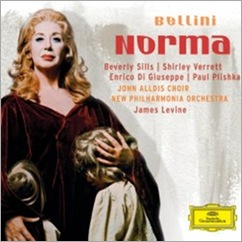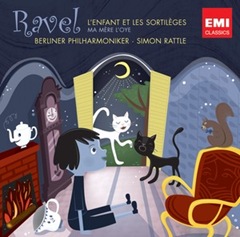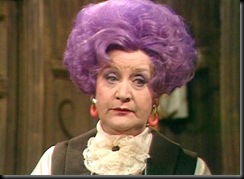 JOSEPH DEEMS TAYLOR (1885 – 1966): Peter Ibbetson, Opus 20: A.D. Griffey (Peter Ibbetson/Gogo Pasquier), L. Flanigan (Mary, Duchess of Towers/Mimsey Seraskier), R. Zeller (Colonel Ibbetson), C.R. Austin (Major Duquesnois), L. Summers (Mrs. Deane), E. Lunde (Mrs. Glyn); Seattle Symphony and Chorale; Gerard Schwarz [recorded during concert performances in S. Mark Taper Foundation Auditorium, Benaroya Hall, Seattle, on 29 April and 1 May 1999; NAXOS 8.669016-17]
JOSEPH DEEMS TAYLOR (1885 – 1966): Peter Ibbetson, Opus 20: A.D. Griffey (Peter Ibbetson/Gogo Pasquier), L. Flanigan (Mary, Duchess of Towers/Mimsey Seraskier), R. Zeller (Colonel Ibbetson), C.R. Austin (Major Duquesnois), L. Summers (Mrs. Deane), E. Lunde (Mrs. Glyn); Seattle Symphony and Chorale; Gerard Schwarz [recorded during concert performances in S. Mark Taper Foundation Auditorium, Benaroya Hall, Seattle, on 29 April and 1 May 1999; NAXOS 8.669016-17]
On the afternoon of Saturday, 7 February 1931, New York’s Metropolitan Opera premiered a specially-commissioned new opera by one of America’s finest composers, Deems Taylor, with the remarkable cast of tenor (and future MET General Manager) Edward Johnson in the title role, soprano Lucrezia Bori as the Duchess of Towers, and baritone Lawrence Tibbett as Colonel Ibbetson. The commission for Peter Ibbetson followed another opera composed by Taylor for the MET, The King’s Henchman, both works having stemmed from an initiative headed by the MET’s General Manager Giulio Gatti-Casazza and influential Board Chairman Otto Kahn to bring more indigenous American opera to the MET.
At the time of the composition of Peter Ibbetson, Deems Taylor was among America’s most successful composers of serious music, having enjoyed in addition to the MET commission for The King’s Henchman (the libretto of which was the work of Edna St. Vincent Millay) success with concert music and musical theatre scores. Critics who objected to the Eurocentric slant of The King’s Henchman, the basis for which was drawn from an Anglo-Saxon source related to the legend of Tristan and Yseult, were surely baffled by Taylor’s selection for the subject of his next MET opera of a Victorian British novel, George du Maurier’s Peter Ibbetson. Taylor decided to write his own libretto for Peter Ibbetson, ultimately collaborating with British actress Constance Collier, star of a Broadway adaptation of the novel. Du Maurier’s novel was also adapted for the cinema via a film by Henry Hathaway, with Gary Cooper as Peter. Rather than an authentically American story, Taylor chose to set a tale of confused national identities, half-remembered childhood affections, and the ethereal, often dangerous realm – a sort of psychological Purgatory – between dreams and reality. Despite dissent from a few critical voices, Peter Ibbetson was warmly received by MET audiences, garnering twenty-two performances over several Depression-era seasons. Licia Albanese studied the role of Mary with Bori, but the opera was not revived at the MET during her career.
Dramatically, Peter Ibbetson explores the separation of childhood [French] friends Gogo Pasquier and Mimsey Seraskier and their eventual reunion [in Britain] as Peter Ibbetson and Mary, Duchess of Towers. Young Gogo is claimed upon the sudden deaths of his parents by his uncle Colonel Ibbertson and, renamed Peter, is relocated to Britain. Having become a promising architect, Peter encounters as a young man the Duchess of Towers, who is eventually revealed to be Mimsey, the closest friend of his youth who taught him to ‘dream true.’ Mimsey/Mary is married, of course, and unavailable to Peter though the deep affection from their childhood resumes as if uninterrupted. Reacting to the Colonel’s claims that he is Peter’s biological father, Peter strikes and unwittingly kills the Colonel. Mary’s intervention ensures that Peter’s death sentence is commuted, and for the thirty years of Peter’s imprisonment he and Mary visit one another nightly in their dreams. When at last Mary does not come to Peter in slumber, he has already sensed that Mary has died when a friend comes to give him the news. Peter dies, and the opera ends with an image of the again-young Peter rising to meet Mary. Metaphorically, there are kinships with Billy Budd, George Lloyd’s Iernin, Der Fliegende Holländer, and even Delius’ A Village Romeo and Juliet in the notions of an innocent’s righteous anger leading to crime and condemnation, the emotional chasms separating cultures, the archetypal redemptive Feminine, and the development of infantile affections into absolute passions. Taylor complicates the piece somewhat with a libretto that mixes English and French texts, with Peter largely reverting to French when he returns in the second act to scenes from his childhood, and extensive use of French folksongs. Though fine in its own right, Peter Ibbetson just misses the mysterious profundity and brilliance of the best operas that deal with similar themes, not least Tristan und Isolde (death as the ultimate, inevitable purification of love) and Peter Grimes (sacrificial love of a woman as the salvation of a misplaced man).
Musically, there is little to identify Peter Ibbetson as distinctly or recognizably America, but there is much fine music in the score. The dream sequences are in the vein of the Walk to the Paradise Garden in A Village Romeo and Juliet, the music not as masterful as Delius’ but nonetheless beautiful and imaginative. Through-composed in late-Romantic tonality, the score makes use of a variety of forms and compositional techniques, including a memorable waltz in the first-act ball scene. A folk tune that begins in the woodwinds in the second scene of Act II develops briefly into what is almost an Offenbach-esque galop. Set pieces are few but excellent when they come. Essentially an extended tone poem, the score nevertheless avoids the flaw displayed by many twentieth-century operas of treating voices solely as instruments within the cacophony. Vocal lines are generally given freedom from the dense orchestral textures, and there are many beautiful if ultimately unmemorable melodies. As with many scores, the music is at its best when the means and intended effects are simplest, as in the gorgeous and sadly brief interlude (with turns in the woodwinds straight out of Wagner; the later Storm Interlude likewise threatens to erupt into the Walkürenritt) after Mary’s and Peter’s ‘Give me your hands’ in the second act. In structure and even in tonal content, the opera’s choral finale closely resembles the closing pages of Die Meistersinger. Peter Ibbetson is not a great score in the manner of mature Mozart, Wagner, or Strauss, but it is a far finer piece than many of the operas composed in the seventy-eight years since its premiere.
The musical forces in the present recording, taken from a pair of 1999 Seattle concert performances, seem committed en masse to making the strongest possible case for Peter Ibbetson. Choral passages are not always composed with the utmost finesse, but the Seattle Symphony Chorale bring endearing conviction to their contributions. Especially in quieter moments, they often make very lovely sounds. In louder, more concerted passages it is possible to wish for the sake of clarity that their numbers were slightly fewer, with a stronger complement of voices among the higher registers. The Seattle Symphony again confirm their standing among American’s finest symphonic ensembles, playing with unperturbed excellence that illuminates Taylor’s generally uncomplicated but learned orchestrations. The woodwinds make an especially strong showing, seizing every opportunity for melodic eloquence with relish. Presiding over the performance is the Symphony’s Music Director Gerard Schwarz (who is also the Music Director of North Carolina’s Eastern Music Festival), whose considerable operatic experience is apparent in his coordination of choral, orchestral, and solo vocal forces. Maestro’s Schwarz’s approach draws out the grandeur of the orchestral interludes but also allows plenty of space in which lyrical phrases are allowed to expand romantically without risking sluggishness. Likely because of the live concert performance provenance of the recording, balances among chorus, orchestra, and soloists are not always ideal, but Maestro Schwarz capitalizes on the abilities of his performers to shape a performance that on the whole conveys something of the impact that the score had on MET audiences in the 1930’s.
Secondary roles are mostly cast from strength, with mezzo-sopranos Lori Summers and Emily Lunde as Mrs. Deane and her mother, Mrs. Glyn, singing very well. Taking several roles, baritone Barry Johnson reveals a fine voice and a talent for differentiating various personas even in the context of a concert performance. As the footman who announces arriving guests in the first-act ball scene, tenor John Obourn also reveals a fine voice, a lovely light tenor that would gladly have been heard more in the course of the performance. Basses Charles Robert Austin and Eugene Buchholz, soprano Terri Johnson, and mezzo-soprano Carolyn Gronlund make the most of their small assignments. Only tenor Paul Gudas, whose alert singing discloses a distinct wobble, falls slightly short of the standard set among the comprimario singers.
The role of Colonel Ibbetson is endowed with a de facto aria in the first act, a poetic recitation not unlike Andrea Chénier’s Improvviso. Sung by Lawrence Tibbett, the piece is sure to have made a great effect as it is composed to show the full range of the baritone voice to advantage. Comparisons with Tibbett are unflattering and unfair to Richard Zeller, who sings the Colonel’s music with a strong, all-purpose voice. In fact, Mr. Zeller’s performance is very good on the whole, the menace of the Colonel brought to the fore without undue snarling. High passages are trying for Mr. Zeller, but he never shrinks from the music even when his vocal comfort is compromised. He rises to the first-act aria with complete dedication, the results compelling if ultimately not of Tibbett-like force. There is little in the libretto that indicates what motivates the Colonel’s actions, but Mr. Zeller faces every challenge head-on and enacts a properly nasty personage without resorting to ugly tone.
As the dream-mongering Duchess of Towers, soprano Lauren Flanigan finds another in her series of congenially quirky roles. Mary’s music is composed in the manner of many twentieth-century soprano roles, which is to say that the conversational passages are almost exclusively in the upper-middle register. Occasional moments of increased passion inspire flights into the highest reaches of the conventional soprano range. Despite occasional sustained tones that threaten to lose stability, Ms. Flanigan satisfies in all registers. Ms. Flanigan’s tone is not consistently rounded in the tradition of Bori (or, for that matter, Albanese), but she brings great power to passages requiring descents into her lower register and displays a seemingly natural affinity for the style of the writing. Ms. Flanigan’s career has seen her ensconced as leading prima donna of the New York City Opera, perpetuating the legacy of Beverly Sills even by taking on Sills’ greatest City Opera challenge, Donizetti’s ‘Tudor’ trilogy. In Mary’s first-act aria, ‘I could never dedicate my days,’ Ms. Flanigan’s voice in fact sounds eerily like Beverly Sills’, a likeness than in itself indicates the fine qualities of Ms. Flanigan’s singing. The wondrous beauty of Beverly Sills’ voice, particularly in pianissimo tones in the upper register, is missing in Ms. Flanigan’s singing, but this is not to suggest that she does not offer a beguiling performance. The aforementioned first-act aria is capped with a magnificently pulse-quickening top C, and the instinctive use of portamento throughout Ms. Flanigan’s performance is refreshing. Ms. Flanigan brings dignity and fervor to her delivery of Mary’s occasionally hokey lines, and in her performance the music somehow seems more distinguished than it perhaps can truly claim to be. Though not as important as many of her other stirring performances, Ms. Flanigan’s performance in this recording can be remembered alongside Beverly Sills’ Baby Doe as a significant performance of an American operatic heroine.
In his music for the name-part, Taylor came closest to creating a role in the mold of the tenor roles composed by Benjamin Britten for Sir Peter Pears. In Peter Ibbetson’s music, there are elements of the lovesick but slightly ridiculous Albert Herring, the not-quite-real Peter Quint, the idealistic Captain Vere, and the terrifically troubled Peter Grimes. This performance gains immeasurably from the singing of one of the current generation’s greatest Britten interpreters, North Carolina-born tenor Anthony Dean Griffey. Every emotional facet of the rather strange Peter Ibbetson is fully realized in Mr. Griffey’s performance, but the most arresting component of the performance is the sheer beauty of Mr. Griffey’s tone. Possessing impressive stamina and reserves of power , the basic timbre of Mr. Griffey’s voice is very attractive, a core of lyrical sweetness softening the robust masculinity of the sound. As Peter Ibbetson, this combination of tonal allure and firmness brings a very persuasive profile to the role. Equally adept at conveying the young man touchingly nostalgic for the environs he knew in his childhood and the proud man capable of violence in defense of his family honor, Mr. Griffey devotes himself vocally and emotionally to the role, a feat that is especially admirable in the context of concert performances. Peter lacks the opportunities for solo display enjoyed by Mary and the Colonel, but he scarcely ever leaves the stage throughout the opera’s duration. Recordings are often pale substitutes for live performances, even when their sources are ‘live,’ but it is possible in Mr. Griffey’s performance on this recording to genuinely experience Peter Ibbetson’s journey, conveyed with ringing, honeyed tone. This is a sublime performance from a singer whose artistic stature grows with every project he undertakes.
, the basic timbre of Mr. Griffey’s voice is very attractive, a core of lyrical sweetness softening the robust masculinity of the sound. As Peter Ibbetson, this combination of tonal allure and firmness brings a very persuasive profile to the role. Equally adept at conveying the young man touchingly nostalgic for the environs he knew in his childhood and the proud man capable of violence in defense of his family honor, Mr. Griffey devotes himself vocally and emotionally to the role, a feat that is especially admirable in the context of concert performances. Peter lacks the opportunities for solo display enjoyed by Mary and the Colonel, but he scarcely ever leaves the stage throughout the opera’s duration. Recordings are often pale substitutes for live performances, even when their sources are ‘live,’ but it is possible in Mr. Griffey’s performance on this recording to genuinely experience Peter Ibbetson’s journey, conveyed with ringing, honeyed tone. This is a sublime performance from a singer whose artistic stature grows with every project he undertakes.
Even a performance with as many fine qualities as this recording boasts is unlikely to return Peter Ibbetson to the repertory. For home listening, however, this recording proves an enjoyable alternative when one tires of hearing the same Verdi and Puccini operas again and again. Deems Taylor was a skillful composer who had keen senses of dramatic timing and careful shaping of vocal declamation. This is not a score that is worthy to be played in the company (or instead) of the genre’s greatest masterworks, but among American operas which can unhesitatingly be said to be better? Vanessa, perhaps, or Susannah: they are decidedly an endangered species, whichever they are. In this recording, the performance by Anthony Dean Griffey is strong enough to suggest that Peter Ibbetson is far more than a musical curiosity.

 VINCENZO BELLINI (1801 – 1835) – Norma: B. Sills (Norma), S. Verrett (Adalgisa), E. di Giuseppe (Pollione), P. Plishka (Oroveso), D. Wallis (Clotilde), R. Tear (Flavio); John Alldis Choir; New Philharmonia Orchestra; James Levine [recorded in Town Hall, Watford, Hertfordshire, England, during July and August 1973; DGG 477 818 6]
VINCENZO BELLINI (1801 – 1835) – Norma: B. Sills (Norma), S. Verrett (Adalgisa), E. di Giuseppe (Pollione), P. Plishka (Oroveso), D. Wallis (Clotilde), R. Tear (Flavio); John Alldis Choir; New Philharmonia Orchestra; James Levine [recorded in Town Hall, Watford, Hertfordshire, England, during July and August 1973; DGG 477 818 6] MAURICE RAVEL (1875 – 1937) – L’Enfant et les Sortilèges: M. Kožená (L’Enfant), N. Stutzmann (Maman, La Tasse Chinoise, La Libellule), A. Massis (Le Feu, La Princesse, Le Rossignol), S. Koch (La Bergère, La Chatte, L’Écureuil, un Pâtre), J. van Dam (Le Fauteuil, un Arbe), F. Le Roux (L’Horloge Comtoise, Le Chat), J.-P. Fouchécourt (La Théière, Le Petit Vieillard, La Rainette), M. Erdmann (une Pastorelle, La Chauve-souris, La Chouette); Rundfunkchor Berlin; Berliner Philharmoniker; Sir Simon Rattle [recorded during concert performances in the Philharmonie, Berlin, 24 – 28 September 2008; EMI 2 64197 2]
MAURICE RAVEL (1875 – 1937) – L’Enfant et les Sortilèges: M. Kožená (L’Enfant), N. Stutzmann (Maman, La Tasse Chinoise, La Libellule), A. Massis (Le Feu, La Princesse, Le Rossignol), S. Koch (La Bergère, La Chatte, L’Écureuil, un Pâtre), J. van Dam (Le Fauteuil, un Arbe), F. Le Roux (L’Horloge Comtoise, Le Chat), J.-P. Fouchécourt (La Théière, Le Petit Vieillard, La Rainette), M. Erdmann (une Pastorelle, La Chauve-souris, La Chouette); Rundfunkchor Berlin; Berliner Philharmoniker; Sir Simon Rattle [recorded during concert performances in the Philharmonie, Berlin, 24 – 28 September 2008; EMI 2 64197 2]